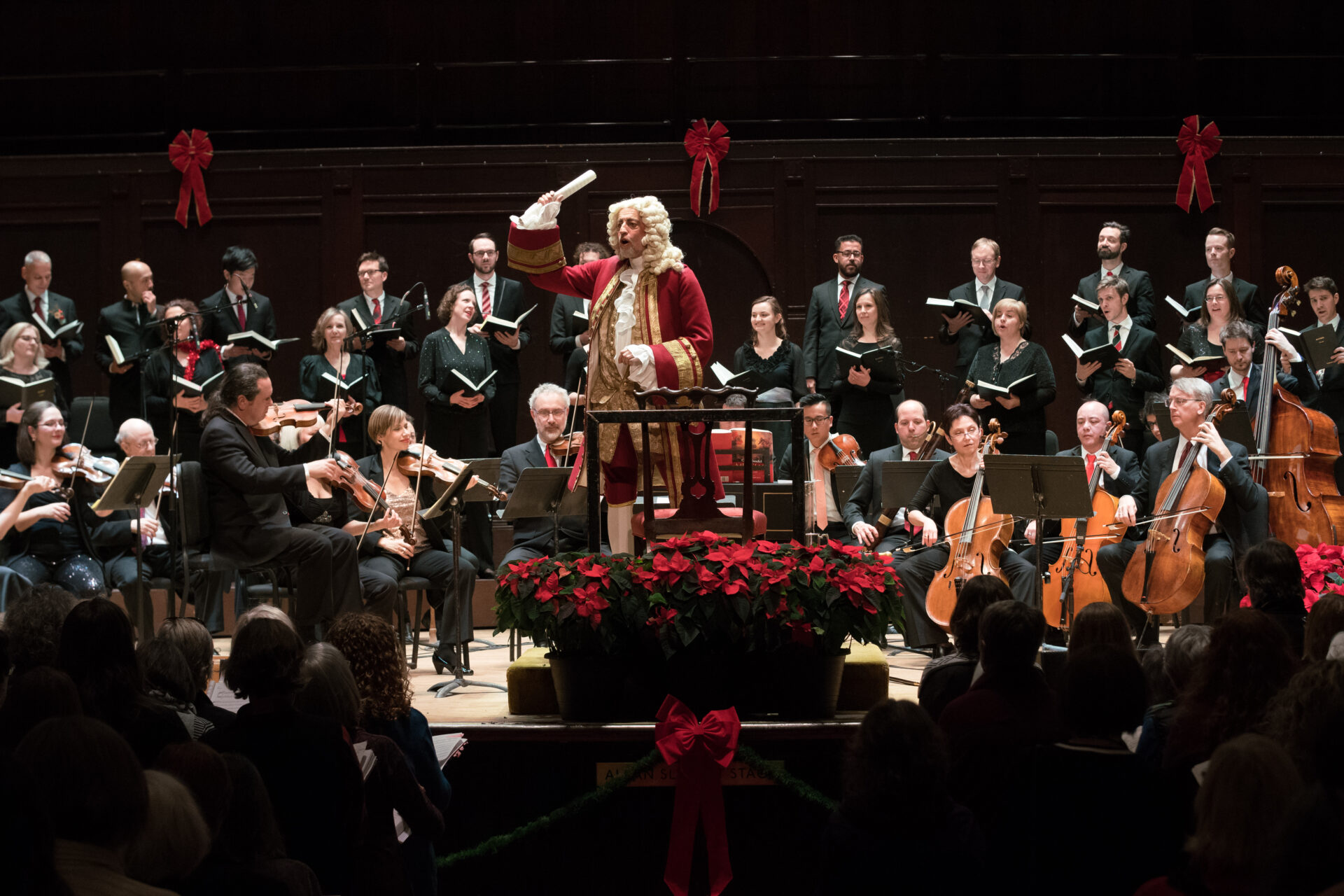There’s an inextricable link between music and the holidays—and to many people, nothing says Christmas quite like Handel Messiah or Bach Christmas Oratorio.
Tafelmusik is playing both works this season, which got us thinking: how do these two festive favourites compare and contrast? In this guide, lean more about the elements behind both of this classic “holiday blockbusters”.
Want to attend either or both of these programs live? Scroll down to access tickets and details.
Bach Christmas Oratorio
Texts: Written in German, the narrative portion is drawn from the Gospels according to Luke and Matthew. It is thought that Bach himself assembled the texts, working with his frequent collaborator, the Leipzig poet Picander, who may have written the texts of the arias. The chorale texts are drawn from Lutheran chorale books.
Handel Messiah
Texts: Written in English, the libretto was
created by Charles Jennens, drawn entirely from
biblical texts, both the Old and New Testaments.
Jennens gave his text to Handel and asked him to
compose Messiah.
Overall Structure: The oratorio was
not written to be performed as one entity. It
consists of six separate parts, each of which was
to performed at church services over the 12 days
of Christmas:
Part I: Dec 25 (the birth of Jesus)
Part II: Dec 26 (the angel appears to the shepherds)
Part III: Dec 27 (the adoration of the shepherds)
Part IV: Jan 1 (the circumcision and naming of Jesus)
Part V: Jan 2 (the Light of Christ)
Part VI: Jan 6 (Feast of Epiphany: the adoration of
the Magi)
Overall Structure: Although now
associated mostly with Christmas, Messiah was
originally written for performance during Lent, and
outlines the entire life of Christ. It is divided in three parts:
Part I: Prophecies of the arrival of the
Messiah, and the events of the Nativity itself
(often described as the Christmas portion).
Part II: The story of Christ’s Passion and
resurrection, ending with the Hallelujah chorus.
Part III: The resurrection and redemption of the
dead and Christ’s glorification in heaven.
Performance History: Written for Christmas services in 1734/35 at St. Thomas and St. Nicholas churches in Leipzig—the only performances in Bach’s lifetime.
Performance History: Written for the theatre, not the church. Composed in 1741 and premiered in Dublin in April 1742. It has been performed every year since except 1744, and was the last piece Handel directed before he died in 1759. He revised the work numerous times, adapting arias to various soloists. Through his performances Handel raised a great deal of money for charity.
Singers: Four soloists and choir are featured in each part. The tenor soloist sings the narrative portions from the Gospels in the form of recitative.
Singers: The score calls for at least 4 soloists
(Handel often had 6). It is one of Handel’s most
extensive works for choir, who sing in half of the work.
Orchestra: There is a different orchestration for each part, with strings, oboes, bassoon & continuo (organ) throughout. In Parts I, III & VI Bach adds 2 flutes, 3 trumpets, and timpani. In Part II he adds flutes and 2 additional oboes, and in Part IV he adds 2 horns.
Orchestra: The orchestral scoring is simple:
oboes, bassoon, strings and continuo (organ &
harpsichord). The oboes play only in the choruses.
Two trumpets and timpani highlight selected
movements, notably the Hallelujah chorus and
the final Amen.
Tafelmusik performances: First performed by Tafelmusik in 1992 (Parts 1-3) and 1993 (Parts 4-6), and performed since in 2003, 2007, and 2015.
Tafelmusik Performances: Performed annually since 1980: a total of 177 performances over 44 years. In 1986 Tafelmusik began its annual tradition of Sing-Along Messiah.

Bach Christmas Oratorio
Nov 22-24, 2024
Almost sold out! Ring in the Yuletide season with a jubilant burst of music by Bach.
Tickets & Details
Handel Messiah
Dec 20-21, 2024
Only two performances, and selling fast! Don’t miss our annual holiday tradition.
Tickets & Details
